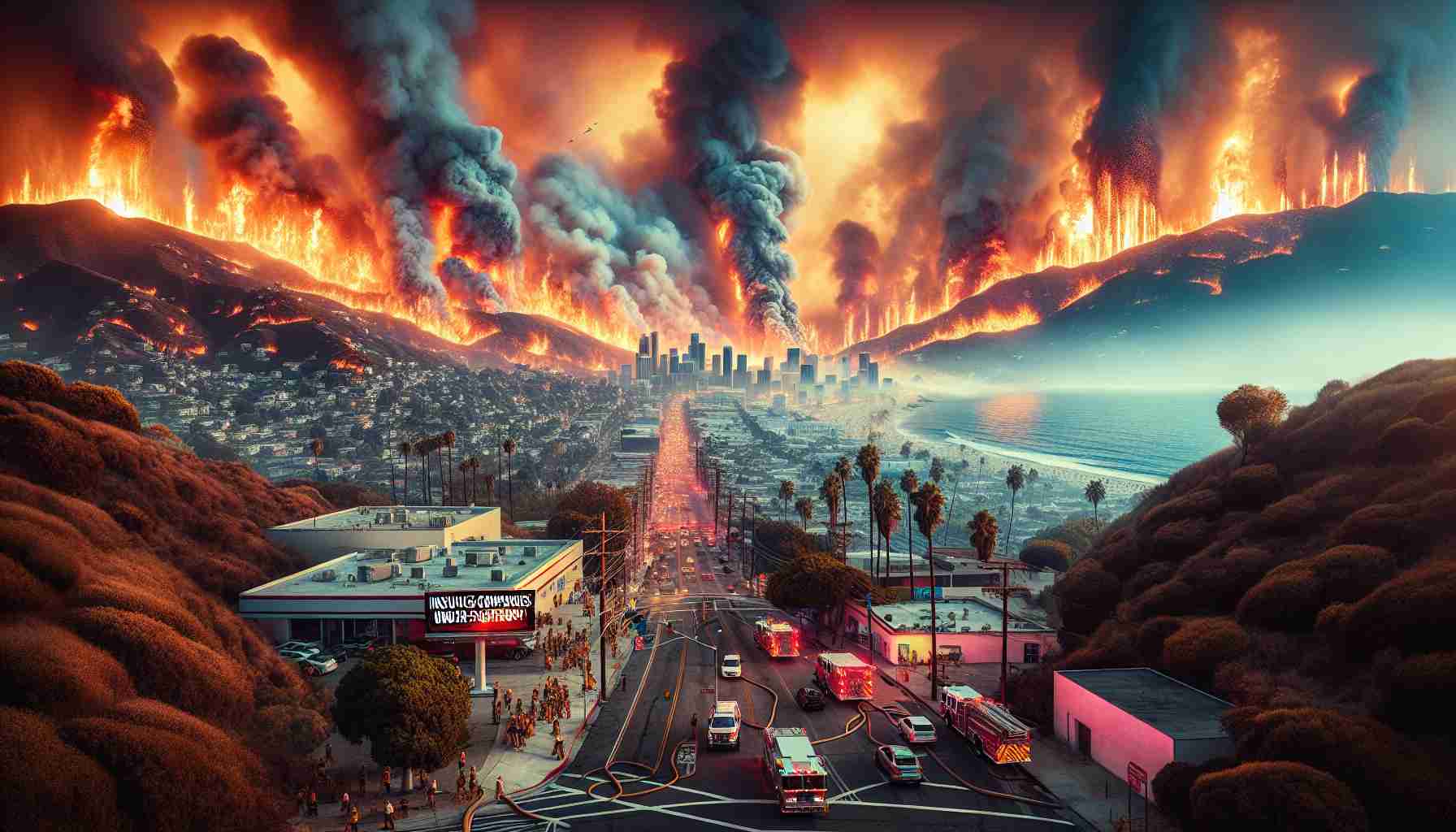California’s Insurance Crisis Amid Wildfire Destruction
The insurance landscape in California faces severe challenges as wildfires wreak havoc in Los Angeles. Kaya Stanley, CEO of CRMBC and an expert in the insurance sector, points out that there is currently no state surplus available to mitigate the catastrophic economic fallout from these natural disasters.
During a recent press conference, Vice President Kamala Harris asserted that many victims of the wildfires are encountering policy cancellations from insurers, which she labeled as a serious issue impacting their recovery efforts. In light of her claims, the insurance industry has responded strongly, describing her statements as “false” and potentially harmful to public perception.
The president of the American Property Casualty Insurance Association, David Sampson, emphasized that California regulations prevent insurers from canceling policies mid-term except under specific conditions. He criticized any implication that companies are abandoning their responsibilities, stating that such narratives instill unnecessary fear among policyholders.
California has been grappling with an insurance crisis long before the recent fires, with many carriers limiting coverage due to escalating risks and losses. Major insurers such as State Farm have stopped renewing thousands of policies, warning that the costs associated with California’s wildfires and regulatory environment are unsustainable.
As Los Angeles continues to face devastation, the plight of uninsured homeowners grows, exacerbating the challenges posed by these catastrophic fires.
California’s Insurance Crisis: Understanding the Impacts and Future Solutions
The Challenge of Insuring Against Wildfires in California
California’s ongoing insurance crisis is largely fueled by the increasing frequency and intensity of wildfires. With a trend of rising temperatures and prolonged droughts, many areas are becoming increasingly uninsurable. As insurers grapple with catastrophic losses, they are compelled to reevaluate their risk assessments, leading to higher premiums, coverage denials, and outright cancellations of policies.
Key Insights into the Insurance Landscape
– Insurance Cancellations and Renewals: Many insurers are halting renewals for homeowners in high-risk fire zones, which has led to an escalation of uninsured homeowners. This trend complicates recovery efforts for those already affected by wildfires.
– Regulatory Limitations: While regulations typically prevent mid-term cancellations, the existing legal framework allows for exceptions when certain conditions are met, such as persistent non-payment or property neglect.
– Economic Impacts: The economic implications of these insurance challenges are profound. Uninsured homeowners may face significant financial burdens following a disaster, increasing the likelihood of homelessness in severely affected areas.
Pros and Cons of the Current Insurance Environment
Pros:
– Increased Awareness: The crisis has led to greater public awareness about wildfire risks and the importance of preparedness.
– Innovation in Insurance Products: Insurers are exploring innovative products, such as parametric insurance, which pays out based on the occurrence of specific events rather than traditional damage assessments.
Cons:
– Rising Premiums: Homeowners are facing skyrocketing insurance costs, making it difficult for many to afford coverage.
– Limited Options: With major players exiting the market or limiting coverage, consumers have fewer choices, often resulting in higher prices and less favorable terms.
Innovative Solutions and Trends in Insurance
To combat these challenges, several insurance companies are adopting new technology and methodologies:
– Data Analytics and AI: Insurers are using advanced data analytics and artificial intelligence to more accurately assess risk and improve underwriting processes. This shift helps to identify areas that are less prone to catastrophic loss.
– Community-Based Initiatives: Some insurers are working with local governments and communities to foster resilience, such as creating firebreaks or community evacuation plans, which could ultimately lower insurance costs by reducing risk.
Looking Ahead: Predictions and Market Analysis
Experts predict that the California insurance market will continue to evolve in response to ongoing wildfire threats. As climate change progresses, it is likely that more regions will experience similar insurance constraints.
– Emerging Markets: New insurance markets could emerge, focusing specifically on high-risk areas, offering tailored products that provide peace of mind for residents.
– Sustainable Solutions: There is a growing emphasis on sustainability in insurance practices. Insurers that actively promote and facilitate sustainable building practices may be able to offer lower premiums as a reward for residents investing in fire-resistant features.
Conclusion
California’s insurance crisis highlights a critical juncture in the relationship between natural disasters and financial recovery. As the state faces increasing environmental risks, both homeowners and insurers must adapt to a rapidly shifting landscape. The focus on innovative risk management strategies and sustainable practices will be essential for navigating the future of insurance in wildfire-prone regions.
For more information on understanding the complexities of California’s insurance landscape, visit insurance.ca.gov.
